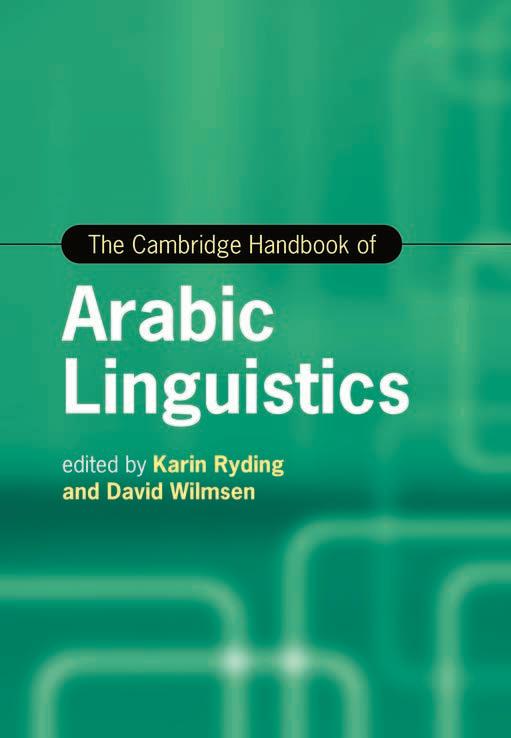
2 minute read
Names in Philosophy
The Cambridge Handbook of Arabic Linguistics
Karin Ryding
Advertisement
Georgetown University, Washington DC
David Wilmsen
American University of Beirut
Description
Arabic linguistics encompasses a range of language forms and functions from formal to informal, classical to contemporary, written to spoken, all of which have vastly different research traditions. Recently however, the increasing prominence of new methodologies such as corpus linguistics and sociolinguistics have allowed Arabic linguistics to be studied from multiple perspectives, revealing key discoveries about the nature of Arabic-in-use and deeper knowledge of traditional fields of study. With contributions from internationally renowned experts on the language, this handbook provides a state-of-the-art overview of both traditional and modern topics in Arabic linguistics. Chapters are divided into six thematic areas: applied Arabic linguistics, variation and sociolinguistics, theoretical studies, computational and corpus linguistics, new media studies and Arabic linguistics in literature and translation. It is an essential resource for students and researchers wishing to explore the exciting and rapidly moving field of Arabic linguistics.
Key Features
• Provides state-of-the-art research reports with updates and overviews of current research areas and efforts • Introduces the application of theory to new types of Arabic texts • Includes a range of approaches to linguistic issues from generative grammar to social media studies
Contents
Introduction and Chapter Summaries; Part I. Arabic Applied Linguistics: 1. Arabic Applied Linguistics; 2. Language Planning in the Arab World; 3. The Study of Arabic Language Acquisition; 4. Issues in Arabic Language Testing and Assessment; 5. Arabic Study Abroad: Critical Contextualization and Research-based Interventions; 6. Models of Arabic Pronunciation; Part II. Arabic Variation and Sociolinguistics: 7. Diglossia, Variation, and Structural Complexity; 8. Sociolinguistic Variation and Variation in Sociolinguistics; 9. What is Formal Spoken Arabic?; 10. Arabic Dialectology; 11. Maltese: A Peripheral Dialect in the Historical Dialectology of Arabic; Part III. Theoretical and Descriptive Studies: 12. Grammaticalization in Arabic; 13. Arabic and Onomastics; 14. The Intonation of Arabic; 15. Case in Arabic; 16. On Arabic Morphosyntax within the Theory of Generative Grammar; 17. Arabic Morphology: Inflectional and Derivational; Part IV. Arabic Computational and Corpus Linguistics: 18. Arabic Computational Linguistics; 19. Arabic Corpus Linguistics and Related Tools: An Overview and Some Critical Observations; 20. The Utility of Arabic Corpus Linguistics; Part V. Arabic Linguistics and New Media Studies: 21. Language Policy and the Arabic Localization of Twitter; 22. Variation and Social Change on Syrian Dissidents’ Social Media; Part VI. Arabic Linguistics in Literature and Translation: 23. Vernacular Varieties in Recent Arabic Literature; 24. Stylistics and Translation: A Corpus-based Case Study of English-Arabic Demonstratives.
Additional Information
Level: Academic Researchers, graduate students Series: Cambridge Handbooks in Language and Linguistics
September 2021 247 x 174 mm c.650pp 978-1-108-41730-3 Hardback £125.00 / US$165.00










